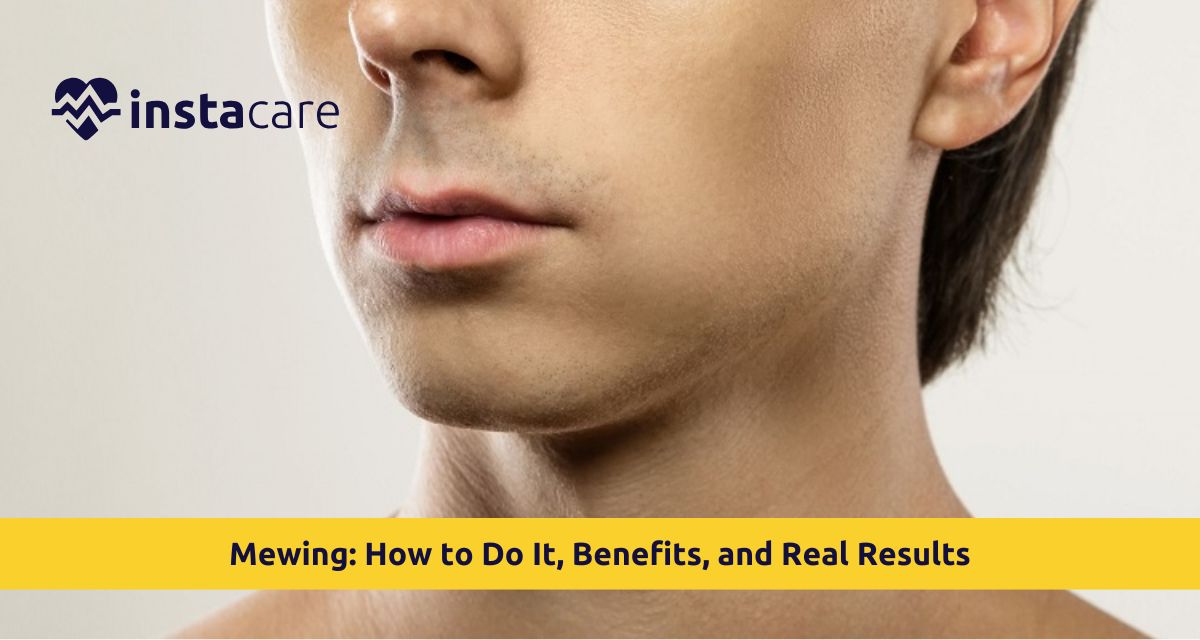What is Mewing?
Mewing is the exercise of placing your tongue in a particular position against the roof of your mouth. The mewing tongue posture has been given the name of British orthodontist Dr. Mike Mew, who thought this tongue placement to be desirable as means of enhancing the facial shape as well as the oral health.
The original mewing hypothesis is simple: by keeping your whole tongue in contact with your palate (the roof of your mouth), you can potentially remodel your face and jaw line over time. The advocates believe that this proper mewing tongue posture leads to a more robust jaw line, mewing for better breathing, and a better-appearing face in general.
Dr. Mew created this technique out of his father's method, Dr. John Mew, who came up with a practice known as "orthotropics." The technique involves guiding the facial growth through enhancing oral posture instead of utilizing orthodontic braces or surgery.
How to Mewing Correctly
Achieving the best mewing tongue posture is important to be able to see any mewing results that can result. Follows how to do mewing correctly below:
Step 1: Get the Right Tongue Position
- Place the tip of your tongue at the back of your front teeth, not lying on them
- Press the whole of your tongue against the roof of your mouth with force
- Have the back of your tongue in contact with the palate
- There needs to be a gentle suction keeping your tongue in position
Step 2: Test Your Technique
- Your teeth are to remain lightly together and in contact
- You are to breathe through the nose, and not the mouth
- Your jaw should not ache or tense, but be relaxed
- The pressure should be gentle, but firm
Step 3: Practice Regularly
- Start with short sessions of 10-15 minutes
- Gradually increase the duration as it becomes a part of your habit
- Eventually, attempt to maintain your tongue in this position throughout the day
- Slow down – this exercise is a long-term game, not a one-night stand
Common Mewing Mistakes to Avoid:
- Using the very tip of your tongue and not your whole tongue
- Pushing your jaw too aggressively and hurting your jaw
- Not breathing through the nose
- Preparing for nighttime changes
- Quitting too suddenly when it feels unnatural at first
Potential Mewing Benefits
Although there isn't much mewing science and research on mewing, advocates cite a number of mewing benefits:
For Your Jawline:
People claim that mewing for jawline can develop a stronger, more defined jawline. The logic is that proper mewing tongue posture maintains the jaw structure in alignment and can even cause the receding chin to appear less salient.
For Reducing Double Chin
Others say that mewing for a double chin tightens the skin beneath their chin. By engaging the muscles in the area, the method might give your neck and chin more definition.
For Better Breathing:
Mewing for better breathing is one of the more popular advantages. With the proper placement of the tongue, your airways can become less blocked, and thus, can prevent snoring and promote better sleep.
Other So-Called Mewing Benefits:
- More angular cheekbones
- Improved facial balance
- Less breathing through the mouth
- Improved oral health
- Healthier swallowing
Mewing Myths and Legends
There are many mewing myths given the popularity that mewing has gained, and those need to be addressed:
Myth 1: Mewing Works Immediately
Reality: Any change you observe due to mewing is years or months later, not weeks. Those most dramatic "mewing transformation" pictures you see on the internet could be a combination of other factors such as
weight loss, improved lighting, and posing.
Myth 2: Mewing Works on Everyone
Reality: Your age plays a significant role. Mewing for adults may have minimal variations from teens with continuously developing facial bones. When your face growth has completed (typically in your early 20s), major improvements are much less probable.
Myth 3: Mewing Can Replace Surgery
Reality: Though mewing can have minor positive influences, it cannot perform the same sudden magic like surgery. Individuals with severe jaw or facial structure issues must seek medical experts.
Myth 4: All Mewing Results Are Real
Reality: Most web mewing before and after photos are likely to be deceptive because of lighting, angle, weight variation, or photo manipulation. Refrain from exaggerated mewing transformation statements.
Risks and Precautions
Although mewing itself is not harmful if done right, some mewing side effects and things to watch out for are:
Physical Discomfort:
- Pain or soreness in the jaw, particularly upon beginning
- Tongue fatigue
- Temporomandibular joint (TMJ) problems if performed improperly
- Over-tension headaches
When to Stop:
- If you find yourself still experiencing chronic jaw pain
- If you start to create clicking or popping within the jaw joints
- If eating and talking start to be painful
- If your bite is moving in undesirable ways
Who Should Be Cautious:
- TMJ patients
- Orthodontic patients
- Chronic pain or jaw injury patients
- Sleep disorder patients must consult with a doctor prior to initiation
Mewing Success Tips
If you try mewing exercises, these are the tips that will lead you to achieve better mewing results:
Start Slowly:
Practice for a short duration and increase gradually. Tongue and jaw muscles take time to get accustomed to the new position.
Emphasize Form over Force:
More gentle, consistent pressure is better than forcing your tongue against your palate forcefully. The goal is to retrain your natural resting position, not to tense your muscles.
Be Consistent:
Consistency outweighs intensity, much like with any form of mewing exercises. Attempt to achieve proper mewing tongue posture in your everyday life.
Build upon Good Habits:
- Stay hydrated
- Get good sleep
- Maintain a healthy diet
- Consider adding other facial exercises
Check Your Progress:
Take photos from the same position with the same lighting conditions in a few months. It helps you notice small changes that can't be observed on a daily basis.
Manage Expectations:
Keep in mind that mewing science and research are always evolving. Although some individuals observe positive changes, mewing results are significantly different across individuals.
Does Mewing Actually Work?
The answer to the question of "does mewing actually work?" is multifaceted. There is little scientific evidence to support mewing, and it depends largely on individual testimonials rather than scientifically well-designed experiments.
What we know of existing mewing science and research:
- Good mewing tongue posture may well lead to mewing for better breathing
- A number of various orthodontists verify the general hypothesis that the posture of the mouth does influence the development of the face
- Posture changes by themselves to adult facial shape will likely be mid
- Most title-reversing change guarantees are not scientifically based
Reality is that mewing can have subtle improvement, especially on mewing for better breathing and oral health, but is most definitely not a miracle solution to facial shape problems. Mewing results, if anything, build up over a period and masses variably from individual to individual.
Conclusion
Mewing is a simple technique that does have a few beneficial effects, largely on mewing for better breathing and overall mouth position. While the sensationalized mewing transformation shown on the majority of internet mewing before and after are likely exaggerated, the practice is essentially safe to do as long as one does how to do mewing correctly.
If you do attempt mewing exercises, be sensible about what you expect. Aim for the likely mewing benefits such as mewing for better breathing but don't set yourself up to see overt changes to your facial appearance. Avoid underestimating the need for good technique – take some time to get proper mewing tongue posture correctly and don't be afraid to learn from early mewing mistakes to avoid.
Most importantly, if your jaw function or facial structure is actually bothering you, consult professional medical professionals and not just on-line trends. Mewing for adults is a helpful supplement to good oral hygiene rituals but is no substitute for professional orthodontic and medical care where appropriate.
Please book an appointment with the
best Dentist in Lahore, Karachi, Islamabad, and all major cities of Pakistan through
Instacare, or call our helpline at 03171777509 to find a verified doctor for your disease.

